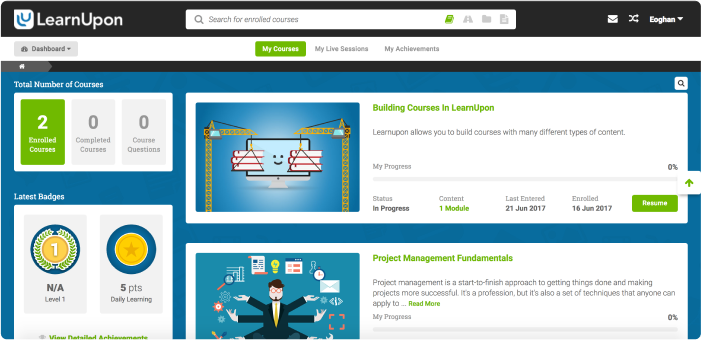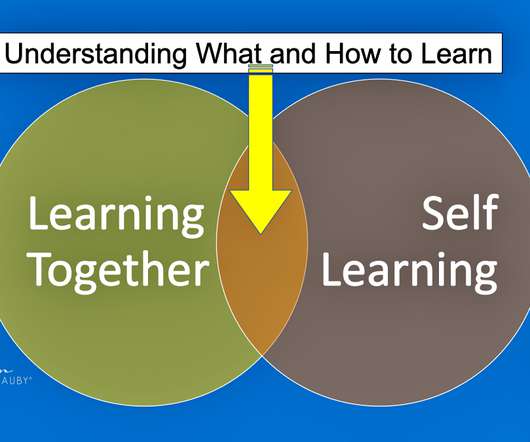Overview
The University of Illinois at Chicago encourages every employee to enthusiastically pursue professional learning and career development opportunities. An extensive and diverse range of resources to support professional development needs are available on the UIC Human Resources website.
Lorman is a leading provider of online training and continuing education for professionals and organizations. Our OnDemand programs, live webinars, corporate training, seminars, and online training courses will help you improve effectiveness, stay in compliance, renew certifications, and enhance professional skills. Search Programs, Workshops & Conferences. Toggle navigation Professional Development & Training.
Professional training opportunities are available from a number of departments on campus, through the University system, from third-party partners, and from external providers. These opportunities encompass a variety of media, including instructor-led courses, workshops, conferences, webinars, videos, and articles. The UIC Human Resources website provides an easy-to-use point of access to these diverse resources, allowing employees to identify opportunities that best suit individual professional development needs.

Review the information found within the Performance Goals and Career Planning section of this website to help clarify your professional development goals. Annual performance review and the UIC employee competencies may provide valuable insight when planning learning activities.
- UIC Training Providers: Browse the units and departments that provide training to the UIC campus.
- LLEAP: Explore the Lifelong Learning and Education Access Program.
- LinkedIn Learning : Select from a wide variety of leadership competencies, business skills, and computer application courses and tutorials.
- UIC101 is a series of short videos that explain a number of key human resource policies and procedures.

There are thousands of reasons to train and develop employees. need to understand how to perform the required work. Current employees need to keep their skills sharp.
Changes in technology, new product introductions or modifications to policies and procedures are all reasons for .
Employee Training Manager Professional Crack Office 2010

Related: 4 Ways to Train Employees Effectively

A major portion of our careers has focused on creating effective workforces. As you might guess, we are huge proponents of training and developing workers. Well-trained staffers produce higher quality work, less scrap and less wasted time. They're better prepared for future challenges and additional roles in your organization.
However, all reasons for focusing on workforce development boil down to performance. We've previously written two of a five-part series on ways to improve employee performance in your organization. These paths include include providing clear objectives, removing roadblocks internal to the company, emphasizing training and development, motivating staffers and coming to grips with an employee unable or unwilling to perform.
Doug often says that business is about figuring out what to do and getting people to do it. Therefore, concentrating on those two goals makes good business sense. Here'll, we 'll address the third lever business owners and managers can pull: training.

First, though, a word of warning: Training and development is not always the answer. Don’t get pulled into the trap that says, 'If my employees are underperforming, I should provide more training.' Instead, first ask the following questions to determine why employees underperform.
- What are my employees doing or not doing that is causing the issue in my organization?
- Do the employees know how to perform that specific action/process/procedure?
- Have the employees been given enough time to become proficient?
If the answer to any of these questions is yes, then training is not the solution. Look to the four other possibilities in this series for your solution.
But if the answer to your questions is no, then ask this question: 'Exactly what do I want my employees to be able to do differently as a result of the training? Do they need to recognize quality problems, answer customer questions more completely and accurately, garner more sales?
Once you have analyzed the need, determine the 'make or buy decision.' Do you have the skills and resources to provide the training internally, or would it make more sense to engage resources outside of your organization to develop and/or deliver the training?
Related: 4 Secrets Behind the Best Employee Training
Training that's internal to the organization
Many organizations provide new employee orientation and on-the-job (OTJ) training. Training normally consists of one or more experienced employees passing on her/ his knowledge to the newcomer.
Since smaller organizations often don’t have well-documented processes, the success of such programs may vary. Training depends on the skills of the experienced employee to deliver correct and consistent information. Even when a process is in place, most internal OTJ and orientation programs we've seen have no clear objectives and do not measure outcomes.
If a new employee fails to “catch on,” the student is often blamed, not the teacher or the training itself.
An example: We worked with a broker-dealer in . The investment advisors complained about the inconsistencies in the company's employees' performance. Sometimes those employees executed their trades in two days, and sometimes it took them five or more days to execute. Mistakes were the norm.
Through our analysis, we found that what employees believed to be 'the process' depended completely on who had initially trained them. So, we took action, developing clear processes; we assigned internal resources to retrain the back office staff. This solved the immediate problem, as well as created a consistent process for future training.
Such internal training can be highly effective, but requires that organization determine training objectives, develop processes/curriculum and deliver the information in a way that maximizes the probability that employee will perform in the desired way.
Employee Training Manager Professional Crack Tool
Internal training also requires that outcomes be evaluated. Determining whether or not the organization has the time and the expertise to develop and deliver these programs is critical to the organizatin's overall success.
Training that's external to the organization
Sometimes it makes sense to bring in outside resources. Organizations can use human resource development (HRD) professionals in a variety of ways:
- Determine training needs: Experienced HRD professionals can conduct surveys, focus groups, interviews and other techniques to help an organization determine the skill and knowledge gaps in its workforce. Gap analysis can ascertain exact needs, allowing the organization to target training and development to specific individuals or organizational requirements, ultimately saving both time and money.
- Develop curriculum: Sometimes the organization knows what it needs but lacks the time or expertise to create the programs and materials. In this case, the company should hire an outside expert to work with one or more subject matter experts (SME) internal to the organization to develop the curriculum. The SMEs provide the internal knowledge while the curriculum expert develops the appropriate materials.
- Delivering information: If you want a message given special attention, having an outside “expert” deliver it may do the trick. Internal experts can suffer from “prophet in their own land” syndrome. We worked with an HR manager who had been trying for several months to get the managers in her organization to hire employees with a particular system without success. As external experts, we explained the hiring system to the managers in a training session -- and they accepted the system immediately. We were able to provide the needed emphasis and, therefore, help to change behavior.
- Determining delivery: An outside expert may be able to help you determine the best method/s for delivering the information. Would your organization be best served by using a classroom method, via computer, through self-study or a combination of these or other vehicles? An experienced HRD professional can help you to determine the most effective methodologies given your specific goals.
- Evaluating training: Finally, an HRD professional can help you to determine the effectiveness of your training. How much and what did the participants learn? What knowledge, skills and behaviors have they used in their job and did the changes have the desired effect? Measuring the results of your training and determining ROI can help you improve your training processes.
Employee Training Manager Professional Crack Office 2016
Related: Online Training For Employees Is Consistent and Will Save You Cash
Whether you decide to assess needs, develop and deliver your training internally or use the skills of an expert to help with some or all of the process, your focus should be on increasing the skills and performance of the employee. If you concentrate on outcomes, your training will benefit your organization. (Next: employee ).